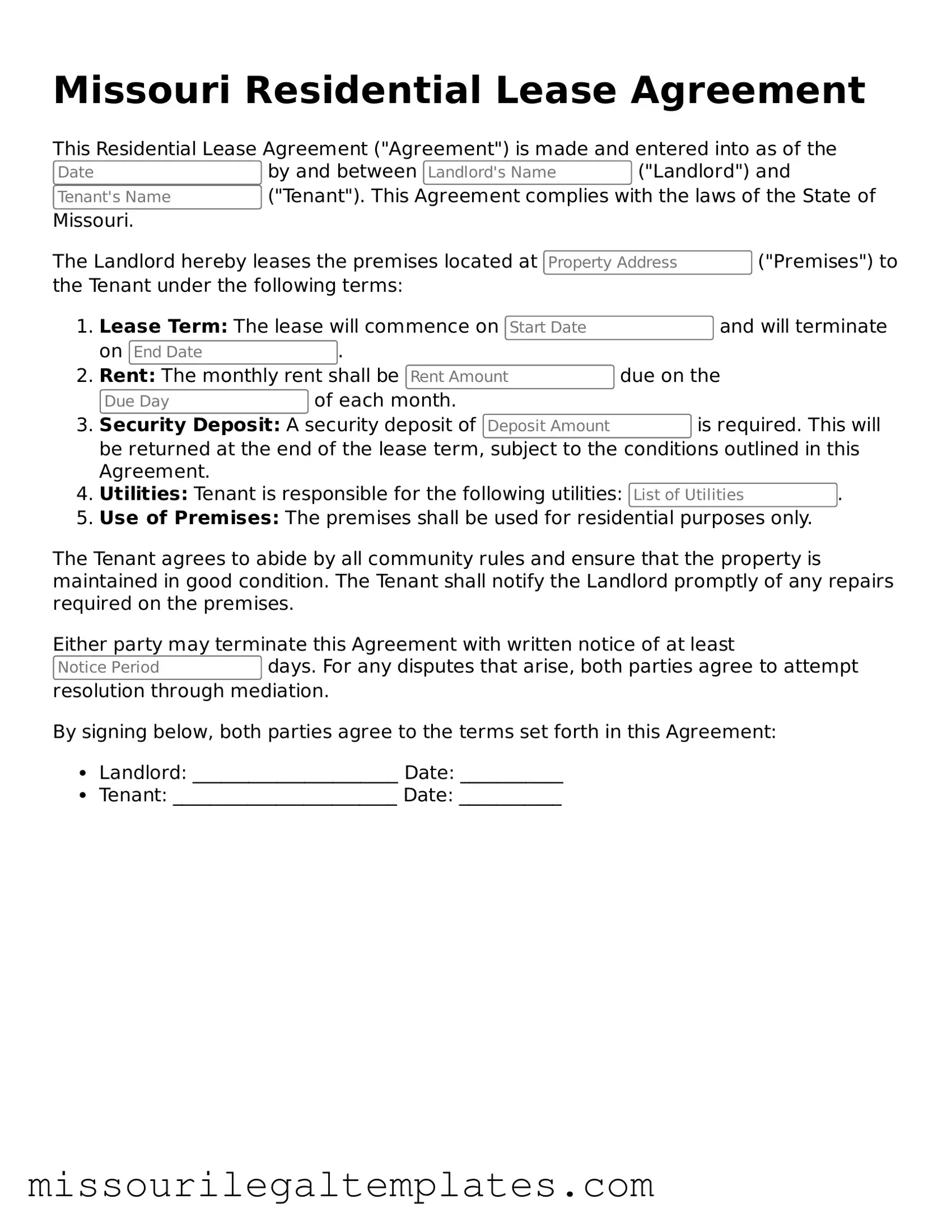Blank Residential Lease Agreement Template for Missouri
The Missouri Residential Lease Agreement is a legal document that outlines the terms and conditions between a landlord and a tenant for renting a residential property in Missouri. This agreement serves to protect the rights of both parties and ensures a clear understanding of their responsibilities. To begin your rental journey, consider filling out the form by clicking the button below.
Fill Out This Form
